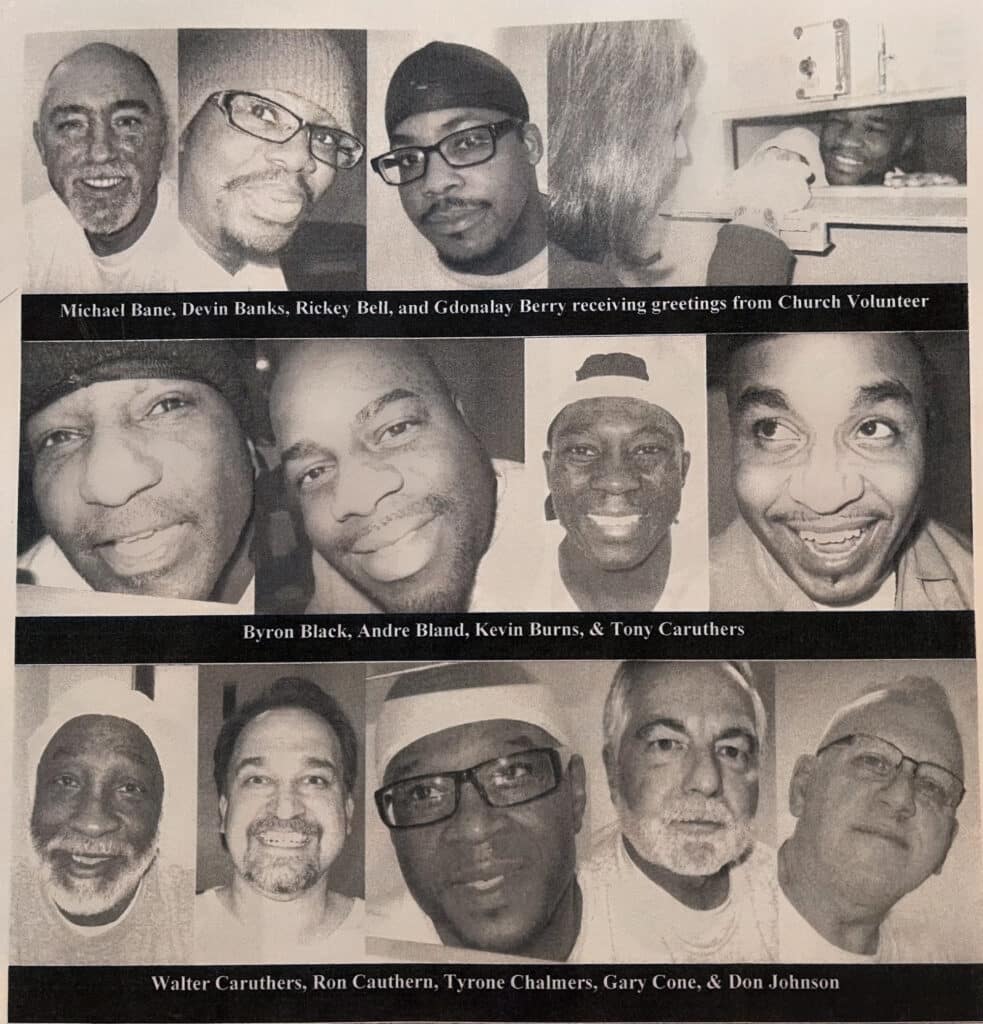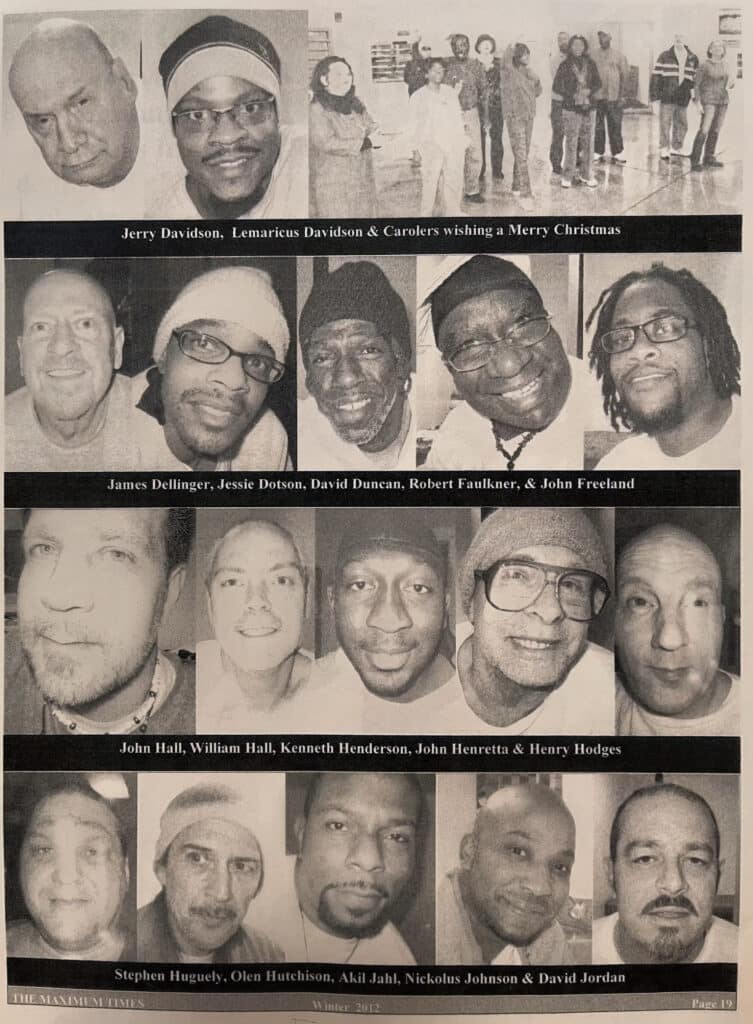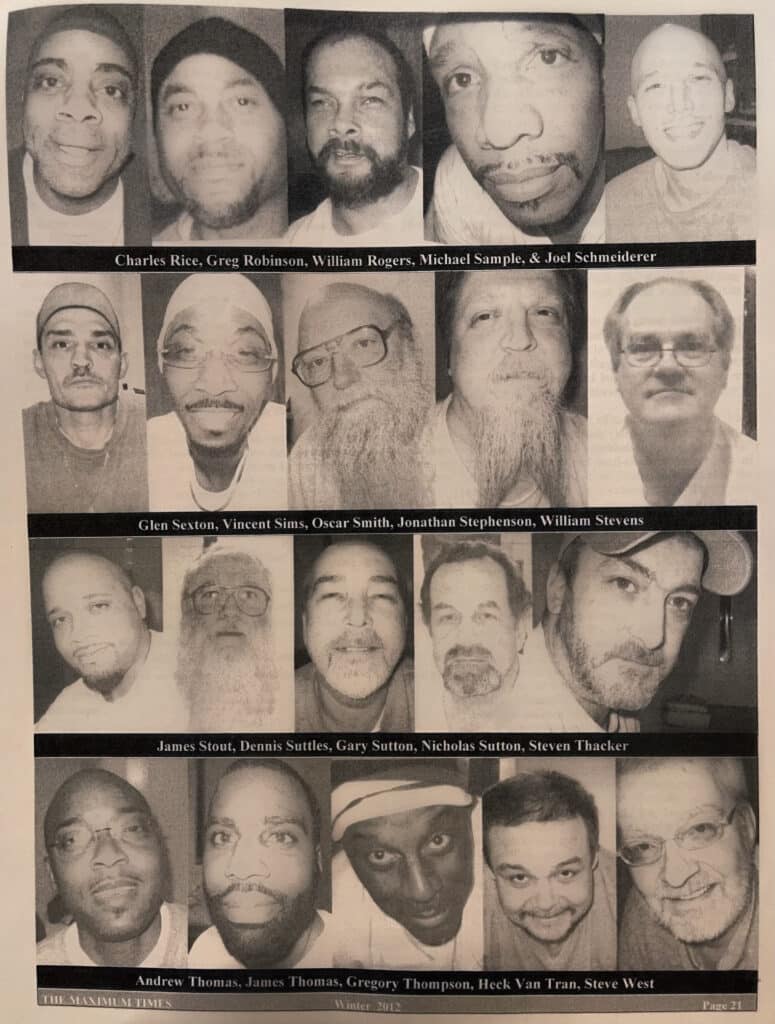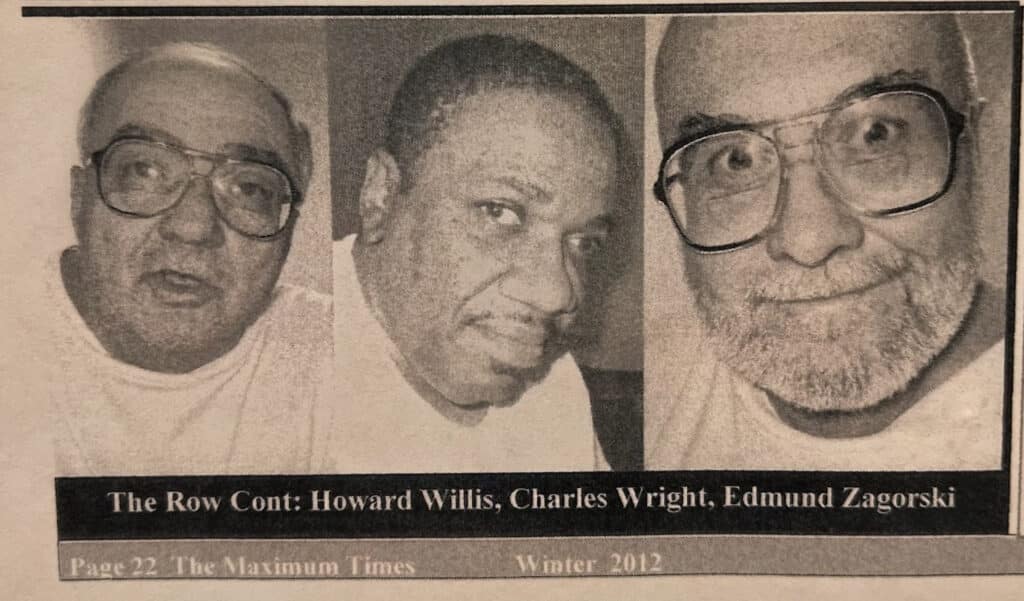From 2010 to 2015 I was incarcerated in Riverbend Maximum Security Institution, the Tennessee prison that houses death row for the men’s system. On one side of a gate, 250 of us lived in a “support staff” unit working maintenance, landscaping, kitchen service or whatever else kept the facility operational. On the other side of the gate were maximum-security prisoners and those in protective custody, and a unit just for the condemned.
I don’t know of anyone else housed in general population who ever got access to death row. But I had this privilege as a clerk for the chaplain, and as the editor of prison newspaper. The Maximum Times was the reason I could even, on rare occasions, bring in a camera. Over the years, all my copies of the paper and almost all of my notes from death row have been lost—destroyed by corrections officers during cell searches, or by toilet floods. But a few pages have survived, including a photocopy of the winter 2012 edition covering a remarkable event where church volunteers were allowed in with Christmas gifts.
I photographed everyone who wanted to be photographed, through the glass of their cell doors. Though it might seem like a small thing to an outsider, for many on death row these photographs may be the only ones in years or decades that were taken with their consent.
I didn’t know what events had brought any of them to death row. I wouldn’t have recognized them as the teenagers and young adults they were back then. I only experienced them as the men they’d become decades later. I was allowed to participate in workshops and group discussions, and thus got to know a few of the people living on death row.
My very first visit, I wondered if the point of the strip searches and multiple security checkpoints was keeping people in or keeping people out. I gained a new appreciation for the volunteers who trekked in each day. But once the last door slammed shut behind you, everything became still and quiet. Like a library. From behind the windows of the single-man cells, residents in white scrubs peeked out.
I had assumed everything would be doom and gloom. I was wrong.


Riverbend’s death row is unusual. For recent arrivals, it works more or less the way death row is expected to: Residents are allowed almost no privileges of any kind. This is called Level C. But as the years go by, death row operates more like the “step-down” programs familiar to many who’ve experienced solitary confinement.
At Riverbend, condemned prisoners who maintain “good behavior” can progress to levels B and then A, gaining access to things like dayroom activities and group workshops. People can eat together. For a time, they could even have jobs at a mini on-site call center. TVs and radios are common features of death row; human interaction, less so. Christa Pike, the only woman on death row in Tennessee, is housed at a different facility and has effectively spent the past 30 years in solitary.
Oscar Smith was writing poetry for an upcoming workshop when I first met him. Stephen West and Nicholas Sutton were putting the finishing touches on a mural depicting the United States flag with blood coming out of it, beneath hands joined in prayer. The mural was to be displayed at a college art exhibition. Officers who worked there spoke highly of these projects, and of the men who created them.
Those three men, along with Don Johnson and Edmund Zagorski, designed a curriculum for mentoring new arrivals on death row. “Being in this place—so close to where they want to kill us—will put you in depression,” Zagorski had pointed out at the time.
At a yoga class I was permitted to join, the volunteer facilitator took us through a series of calming exercises intended to help center oneself. At the end she asked the participants how the experience was for them, and Sutton responded that he hoped it would help keep him calm when he was strapped to the electric chair. Everyone else nodded in agreement.



All 27 states that still carry out the death penalty use lethal injection as the primary method of execution. Tennessee allows those sentenced to death before 2000 to request the electric chair—”Old Smokey.” Eight states currently allow the electric chair as an option, but Tennessee is the only one that uses it. No other state has executed anyone by electrocution since 2013.
Some of the people who have been executed in the US, and hundreds of the people who were condemned and eventually exonerated, were wrongfully convicted. But the state is never executing the same person as the one it convicted. None of us are the same person we were 20, 30, 40 years ago.
Various staff assigned to death row stated that prisoners including West, Zagorski and Sutton had stepped in to protect them during dangerous situations, and routinely de-escalated the violence in the unit.
For example, Sutton, who was 18 when he was first incarcerated, dedicated his adult life to violence reduction and risked his own safety multiple times to protect those around him, including saving an officer from being taken hostage during a riot. After Paul House, who spent over 22 years on death row before being exonerated, could no longer walk and was denied a wheelchair, Sutton carried him around on his back. After Lee Hall Jr. could no longer see and was denied a walking stick, Sutton became his guide, until officers came to guide the legally blind Hall to the electric chair in 2019.
In 2020, Sutton was denied clemency and executed via the electric chair, too.
When I was transferred away from Riverbend in 2015, there were 75 people on its death row. Today there are 45. Some were resentenced. Some died of natural causes. Sutton, Zagorski, West and David Earl Miller were executed on the electric chair. Johnson and Billie Ray Irick were executed by lethal injection.
Oscar Smith, now 74, is the oldest person on death row in Tennessee. He was the next person scheduled to be killed when the state paused executions in 2022, following an investigation into improper lethal injection practices. In the next few months, executions are expected to resume.
Photographs via Tony Vick/The Maximum Times. All individuals pictured signed media release forms.





Show Comments